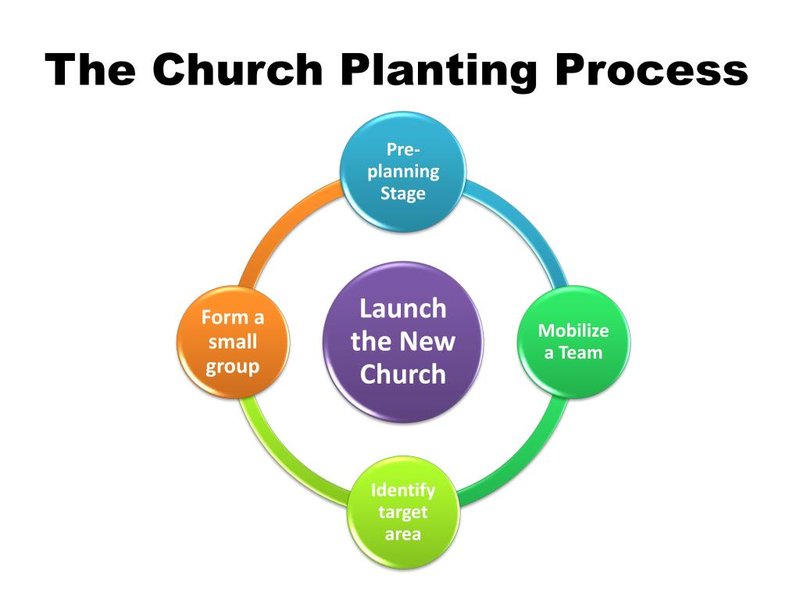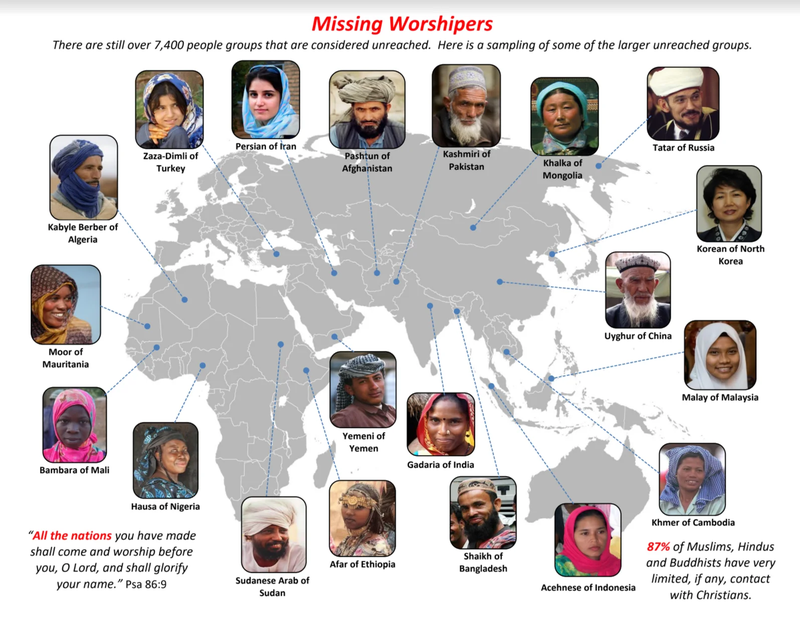· Christian Missions · 10 min read
Transforming Modern Missions: 7 Inspiring Church Planting Stories in the Digital Age
Discover 7 inspiring church planting stories in diverse cultures using innovative digital strategies. Explore successful mission field journeys in the modern age! #churchplanting #digitalmissions

Transforming Modern Missions: 7 Inspiring Church Planting Stories in the Digital Age
In today’s digital age, modern missions are undergoing a transformative shift. With the rise of technology and the widespread use of the internet, church planting has taken on new dimensions. The digital age has opened up vast opportunities for reaching different cultures and expanding the reach of the gospel. In this article, we will explore seven inspiring church planting stories that exemplify the power of digital strategies in modern missions.
1. How has technology transformed modern missions?
Technology has revolutionized modern missions, allowing missionaries to connect with people from different cultures and spread the message of Christ like never before. The advent of smartphones and the internet has made it possible to reach billions of people worldwide. According to statistics, there are currently 6.378 billion smartphone users globally, representing 80.63% of the world’s population. This presents an immense opportunity for church planting in the digital age.
The COVID-19 pandemic further accelerated the adoption of digital strategies in missions. With travel restrictions and social distancing measures in place, missionaries had to find alternative ways to engage with communities. Online platforms became vital tools for sharing the gospel, conducting discipleship programs, and establishing new churches.
As technology continues to advance, so do the opportunities for innovative mission strategies in the digital age. The key is leveraging these technologies to connect with people, build relationships, and share the love of Christ in culturally relevant ways.
Source: “The Changing Face of Missions in the Digital Age”
2. What are some successful church planting stories in different cultures?
Church planting stories in different cultures serve as powerful examples of how digital strategies can transform modern missions. One such story comes from a missionary working among an unreached people group in Southeast Asia. Through online platforms and social media, he was able to connect with individuals who were searching for spiritual answers. This digital engagement eventually led to the formation of a vibrant local church, reaching and transforming the lives of many.
Another inspiring story comes from a team of missionaries who used digital tools to reach young adults in urban areas. They created an online community where individuals could explore their faith, ask questions, and receive mentorship. Through this digital church planting approach, they were able to establish multiple online and offline communities, effectively ministering to a previously unreached demographic.
These stories highlight the power of digital strategies in reaching diverse cultures and establishing new churches. Through technology, missionaries can bridge language barriers, overcome geographical limitations, and engage with people who may have limited access to traditional forms of evangelism.
Source: “A Church Planting Movement Up Close: A Story from the Field”
3. What are the current trends and challenges in modern Christian missions?
Modern Christian missions are shaped by various trends and challenges that require innovative approaches. Global diversity is one such trend, as missionaries are increasingly engaging with people from different cultural backgrounds. This necessitates a contextualized approach to church planting that takes into account the unique needs and worldview of each culture.
Urban challenges also play a significant role in modern missions. With rapid urbanization, more people are living in cities than ever before. This presents both opportunities and challenges for church planting. Urban areas provide a concentrated population to reach, but they also come with complex social dynamics and diverse spiritual beliefs.
Technology integration is another key trend in modern missions. As mentioned earlier, technology has become an essential tool for reaching people globally. Missionaries are leveraging digital platforms, social media, and mobile apps to share the gospel, disciple believers, and establish new churches.
Challenges in modern Christian missions include navigating cultural barriers, addressing poverty and social injustice, adapting to rapidly changing technologies, and finding sustainable models for long-term impact. Despite these challenges, the transformative power of the gospel remains central to modern missions.
Source: “What Are the Current Trends and Challenges in Modern Christian Missions”
4. How can churches develop effective digital mission strategies?
Developing effective digital mission strategies is crucial for churches seeking to engage in modern missions. Here are five key improvements that can increase a church’s global effectiveness:
Be intentional: Intentionality is essential in all areas of life, including mission strategies. Churches should have a clear vision and purpose for their digital mission efforts. This involves setting specific goals, identifying target audiences, and developing strategies tailored to reach them.
Embrace technology: Churches must embrace technology as a tool for mission rather than viewing it as a threat or distraction. This includes leveraging social media platforms, creating engaging online content, and utilizing digital tools for discipleship and church planting.
Cultivate partnerships: Collaboration is vital in digital missions. Churches can partner with other organizations, missionaries, and local believers to maximize their impact. By pooling resources, sharing expertise, and supporting each other’s efforts, churches can reach more people effectively.
Adapt to cultural contexts: Effective digital mission strategies require cultural sensitivity and contextualization. Churches should strive to understand the cultural nuances of the communities they are trying to reach and adapt their approach accordingly. This may involve translating content, using culturally relevant imagery, or incorporating local languages.
Measure impact: Churches should regularly evaluate the impact of their digital mission strategies. This involves tracking metrics such as website traffic, social media engagement, conversions, and discipleship outcomes. By assessing the effectiveness of their efforts, churches can make informed decisions and continually improve their digital mission strategies.
Source: “How to Develop a Church Missions Strategy That Works”
5. What are some reimagined approaches to Christian missions in the digital age?
The digital age offers exciting opportunities for reimagining Christian missions. Here are five ideas for reimagining missions in the digital age:
Leverage storytelling: Stories have the power to connect people on a deep level. Churches can use digital platforms to share testimonies, narratives of transformation, and personal experiences of faith. By leveraging the power of storytelling, churches can captivate audiences and inspire them to explore their own faith journeys.
Utilize multimedia content: In the digital age, churches can go beyond traditional text-based communication and engage audiences with multimedia content. This includes videos, podcasts, infographics, and interactive webinars. By using a variety of mediums, churches can cater to diverse learning styles and capture the attention of different age groups.
Engage in online discipleship: Digital platforms provide unique opportunities for discipleship. Churches can develop online discipleship programs, mentorship platforms, and virtual small groups to nurture spiritual growth. These digital discipleship initiatives can reach individuals who may not have access to physical church communities or prefer the flexibility of online engagement.
Establish virtual church communities: Virtual church communities allow individuals to connect with like-minded believers regardless of geographical location. Churches can create online platforms where people can worship together, participate in prayer meetings, and engage in fellowship. This approach enables churches to reach individuals who are unable to attend physical gatherings or live in remote areas.
Collaborate with local believers: The digital age makes it easier for churches to collaborate with local believers in different regions. Churches can partner with indigenous leaders and provide resources, training, and support for local church planting efforts. By empowering local believers, churches can foster sustainable growth and long-term impact in communities around the world.
Source: “Reimagining Christian Mission and the Role of the Local Church”
6. How can churches use digital ministry strategies to reach wider audiences?
Digital ministry strategies offer churches a powerful tool to reach wider audiences. Here are some key ways churches can use digital strategies to expand their reach:
Create compelling online content: Churches can produce high-quality, engaging content that resonates with their target audience. This includes blog articles, videos, podcasts, and social media posts that address relevant topics and provide valuable insights. By consistently creating compelling content, churches can attract and retain a wider audience online.
Optimize for search engines: Search engine optimization (SEO) techniques can help churches increase their online visibility. By optimizing their website and content for keywords relevant to their ministry, churches can rank higher in search engine results and attract more organic traffic. This allows them to reach individuals actively seeking answers to spiritual questions.
Utilize social media platforms: Social media platforms provide excellent opportunities for churches to engage with wider audiences. By establishing a strong social media presence, churches can share content, interact with followers, and build relationships with individuals who may not have encountered their ministry otherwise. Social media platforms also offer targeted advertising options that churches can leverage to reach specific demographics.
Explore online advertising: Paid online advertising can be a powerful tool for reaching wider audiences. Churches can invest in targeted ads on platforms like Google Ads or Facebook Ads to promote their ministry, events, or resources. By strategically targeting their ads based on demographics, interests, and search behavior, churches can effectively reach individuals who may be interested in their message.
Invest in email marketing: Email marketing allows churches to directly communicate with individuals who have expressed interest in their ministry. By building an email list and sending regular updates, newsletters, and resources, churches can nurture relationships with a wider audience. This personalized form of communication helps keep the church’s message top of mind and encourages ongoing engagement.
Source: “The Ultimate Guide to Digital Ministry Strategy”
7. How is digital missions transforming the way the gospel is shared globally?
Digital missions are transforming the way the gospel is shared globally by breaking down barriers of distance, language, and culture. Through digital platforms, the message of Christ can reach corners of the world that were previously inaccessible. The internet provides a borderless space where individuals can encounter the gospel and engage in spiritual conversations.
Digital missions also enable real-time engagement and discipleship. Missionaries can connect with individuals instantly through chat platforms, video calls, and social media interactions. This allows for personalized conversations, prayer support, and discipleship relationships that transcend geographical limitations.
Furthermore, digital missions empower local believers to become active participants in sharing the gospel. By equipping indigenous leaders with digital tools and resources, churches can empower them to reach their own communities effectively. This approach not only increases the impact of missions but also fosters long-term sustainability as local believers take ownership of spreading the gospel.
The transformative power of digital missions lies in its ability to adapt to the ever-changing technological landscape. As new platforms and technologies emerge, churches can continue to innovate and find creative ways to share the gospel globally.
Source: “Digital Missions - Connecting people to the gospel digitally - Cru”
Conclusion
The digital age has revolutionized modern missions by providing unprecedented opportunities for church planting and spreading the gospel globally. Through inspiring stories of successful mission strategies in different cultures, we have seen how technology has transformed modern missions.
By developing effective digital mission strategies, reimagining approaches to Christian missions in the digital age, and utilizing digital ministry strategies, churches can reach wider audiences and make a significant impact. Digital missions are transforming the way the gospel is shared globally by breaking down barriers and empowering local believers.
In this new era of modern missions, embracing technology and leveraging digital strategies are vital for churches seeking to fulfill the Great Commission in culturally relevant ways. As technology continues to advance, churches must adapt and innovate to reach people effectively and transform lives in the digital age.



